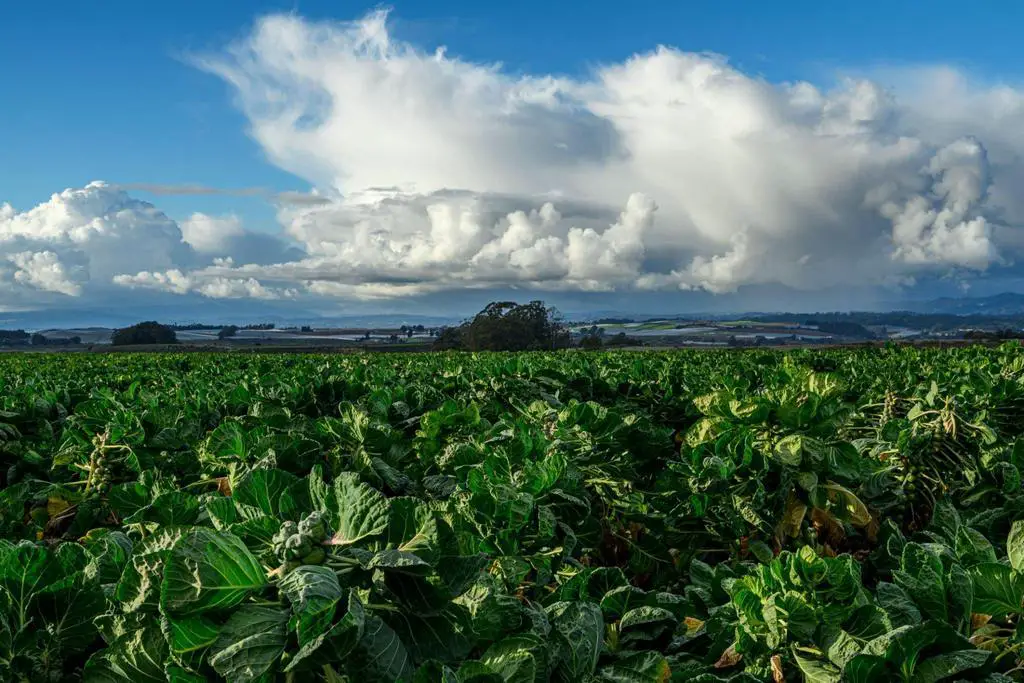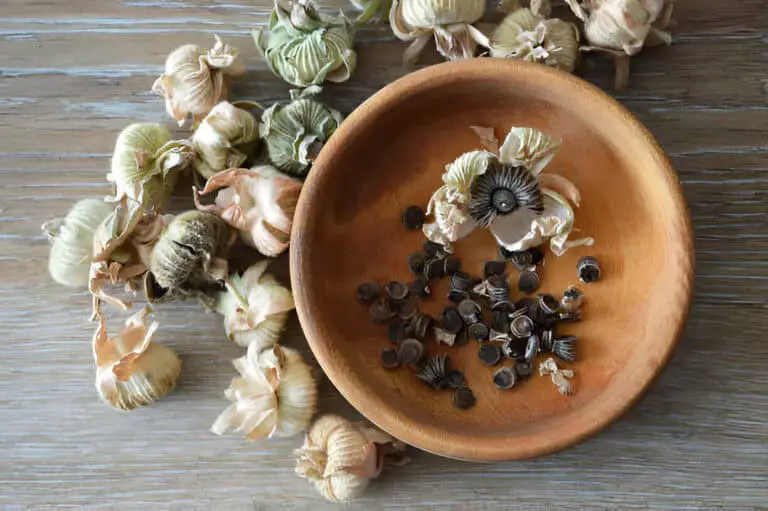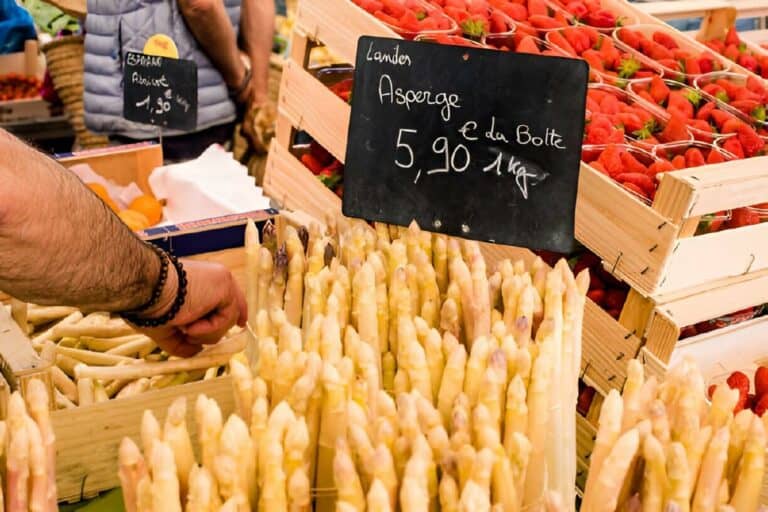Do Brussel Sprouts Come Back Every Year? How Many Times It Produces?

Welcome to the captivating world of Brussels sprouts! If you’re a fan of these miniature cabbage-like veggies, you might find yourself wondering about their growing habits. Do Brussels sprouts come back every year? How many times can they produce those delightful sprouts that grace our dinner plates?
In this article, we’re about to unveil the secrets of Brussels sprouts and delve into their fascinating life cycle. Prepare to be amazed as we uncover the truth behind their perennial or biennial nature. We’ll guide you through the magical transformation that occurs in the second year, when these hardy plants reveal their true potential.
But that’s not all! We’ll also share valuable tips and tricks to maximize your Brussels sprouts yield. From proper planting techniques to nurturing their growth and protecting them from pests and diseases, we’ve got you covered.
So, grab your gardening gloves and join us on this adventure as we unravel the mysteries of Brussels sprouts. Get ready to cultivate a thriving crop and savor the delicious rewards year after year!
Brussel Sprouts and Its Lifecycle
Brussel sprouts have an intriguing history and origin. They are believed to have originated in ancient Rome, with their cultivation dating back to the 13th century in Belgium, from which they derived their name. Today, Brussels sprouts are widely grown and enjoyed as a nutritious and flavorful vegetable crop.
Understanding the annual life cycle of Brussel sprouts is key to grasping their production patterns. Brussel sprouts are classified as cool-season biennials, which means they complete their life cycle in two years but are typically grown as annuals.
During the first year, Brussel sprouts focus on vegetative growth, developing a sturdy stalk and a profusion of large, dark green leaves. In the second year, if left unharvested, Brussels sprouts produce a tall flowering stalk with yellow flowers that eventually give way to seed pods.
Growing as Annuals
To maximize Brussel sprouts’ productivity and culinary enjoyment, they are commonly grown as annuals. Here is a step-by-step guide to growing Brussel sprouts as annual plants:
- Planting: Start by selecting a suitable site with well-drained soil and ample sunlight. Brussel sprouts thrive in cool climates, ideally with temperatures between 45°F and 75°F. Prepare the soil by incorporating organic matter and ensure a pH level of 6.0 to 7.5.
- Sowing Seeds: Begin sowing seeds indoors 6 to 8 weeks before the last frost date in your region. Plant the seeds ¼ to ½ inch deep in seed trays or pots filled with seed-starting mix. Keep the soil consistently moist and provide sufficient warmth for germination.
- Transplanting: Once the seedlings have developed several true leaves and the threat of frost has passed, transplant them into the garden. Space the plants approximately 18 to 24 inches apart, allowing room for their extensive growth.
- Cultivation and Care: Regularly water the plants, aiming for 1 to 1.5 inches of water per week. Mulching around the base of the plants helps retain moisture and suppress weed growth. Fertilize periodically with a balanced vegetable fertilizer, following the package instructions.
- Pest and Disease Management: Monitor the plants for common pests like aphids, cabbage worms, and slugs. Employ organic pest control methods such as handpicking, companion planting, and introducing beneficial insects. Practice good garden hygiene to minimize the risk of diseases like clubroot and powdery mildew.
Do Brussel Sprouts Come Back Every Year? Perennial Brussel Sprouts Varieties
While Brussel sprouts are typically grown as annuals, there are intriguing perennial varieties available to adventurous gardeners. Perennial Brussel sprouts are a relatively recent development, offering the potential for extended harvests and increased convenience.
Perennial Brussel sprouts exhibit characteristics such as continuous sprout production, shorter stalks, and increased cold tolerance. These varieties can be a valuable addition to perennial vegetable gardens or for those seeking to experiment with a different approach to Brussel sprouts cultivation. They provide the opportunity to enjoy fresh Brussel sprouts over multiple years without the need for replanting.
One notable perennial Brussel sprouts variety is ‘Catskill,’ which is known for its excellent winter hardiness and continuous production of tender sprouts. Another popular variety is ‘Rubine,’ prized for its vibrant purple color and robust flavor. These perennial varieties offer the advantage of convenience and the potential for a longer harvesting season.
Factors Influencing Brussel Sprouts Production
Several factors play a crucial role in the yield and productivity of Brussel sprouts. By understanding these factors, you can optimize your cultivation practices and ensure a bountiful harvest. Here are some key considerations:
- Temperature and Climate: Brussel sprouts thrive in cooler temperatures and are often grown as a fall or winter crop. They require a minimum temperature range of 45°F to 75°F for optimal growth. High temperatures can negatively impact sprout development and result in looser heads.
- Light Requirements: Brussel sprouts are considered long-day plants, meaning they require an extended period of daylight to initiate sprout formation. Adequate sunlight exposure, typically 6 to 8 hours per day, is essential for robust sprout development.
- Soil Conditions: Brussel sprouts prefer well-drained soil with a pH level between 6.0 and 7.5. Amending the soil with organic matter improves fertility and moisture retention. Regular soil testing and appropriate nutrient supplementation contribute to healthy plant growth.
- Watering and Irrigation: Brussel sprouts require consistent moisture throughout their growth cycle. Regular watering, aiming for 1 to 1.5 inches of water per week, helps promote optimal growth and prevents stress-induced issues like splitting or bolting.
- Spacing and Plant Density: Providing sufficient spacing between Brussel sprout plants allows for proper air circulation and minimizes competition for nutrients. Aim for a spacing of 18 to 24 inches between plants, ensuring they have ample room to grow and develop sprouts.
- Nutrition and Fertilization: Applying a balanced fertilizer specifically formulated for vegetable crops ensures an adequate supply of essential nutrients. Regularly monitor the plants for signs of nutrient deficiencies and adjust fertilization accordingly.
- Pest and Disease Management: Common pests that can affect Brussel sprouts include aphids, cabbage worms, and flea beetles. Implementing integrated pest management strategies such as physical barriers, companion planting, and organic pest control methods can help mitigate these issues. Additionally, practicing crop rotation and maintaining good garden hygiene can reduce the risk of diseases like clubroot and powdery mildew.
By considering these factors and implementing proper cultivation practices, you can enhance the yield and quality of your Brussel sprout harvest.
Harvesting Brussel Sprouts

When it comes to harvesting Brussels sprouts, timing is crucial. You want to ensure that the sprouts have reached their ideal size before picking them. Generally, the sprouts are ready for harvest when they are about one to two inches in diameter.
However, it’s important to note that not all the sprouts on the plant will mature at the same time. They tend to develop from the bottom of the stalk upward, so you can begin harvesting the lower sprouts and leave the upper ones to grow further.
Harvesting Brussel sprouts at the right time is crucial to ensuring optimal flavor and texture. Here are some detailed instructions to help you harvest your Brussel sprouts:
- Observation: Begin by closely observing your plants. The sprouts start developing from the bottom of the stalk and progress upward over time. Wait until the sprouts are firm, compact, and about 1 to 2 inches in diameter.
- Timing: The timing of the harvest depends on your personal preference and the desired tenderness of the sprouts. Some people prefer to harvest them when they are small and tightly closed, while others wait until they are slightly larger.
- Technique: To harvest the sprouts, firmly hold the stalk with one hand and use the other hand to snap or cut off the sprouts. Start from the bottom, working your way up the stalk, and leave the topmost small leaves intact as they continue to provide energy to the plant.
- Post-harvest Care: After harvesting, remove any damaged or yellowing leaves. Rinse the sprouts in cool water to remove any debris. If you plan to store them, dry them thoroughly and refrigerate them in a breathable bag or container.
Multiple Harvests and Extended Growing Seasons
In ideal conditions, a Brussels sprout will come back after its first year, living a total of two years. Brussel sprouts are bountiful plants that can be harvested continuously once they start to produce if they’re growing in the right environment.
In this grow trial in Santa Clara County, California, Brussels sprout plants that were planted in April were harvested a total of six times over a 10 month period, with the last harvest coming in February of the next year.
Brussel sprouts can survive cool weather and even a light frost. If you experience mild winters, you may be able to harvest from your Brussels sprout plant throughout the winter.
If you live in the north, you’ll be able to continue harvesting from them through the fall, but eventually, when temperatures reach a low enough level, the plants will stop producing and go dormant. Where I live in Michigan, Brussels sprouts will usually survive the winter, but they do not produce well their second year.
If your growing season is coming to an end soon, consider topping the plant to send all of the plant’s energy towards finishing up the sprouts that are present on the plant.
If you live in an in-between zone and don’t know if you should grow Brussels sprouts as an annual or not, you can help the plants survive through the winter by giving it a shot. You can help the plants by spreading a thick layer of mulch on the ground around the base of theBrusselsl sprout plants to insulate them from the cold.
Wouldn’t it be wonderful to enjoy fresh Brussel sprouts for an extended period? Well, with some strategic planning and cultivation techniques, you can extend the harvest season. Here are some strategies to consider:
- Succession Planting: Instead of planting all your Brussel sprouts at once, stagger the planting by sowing seeds or transplanting seedlings every few weeks. This approach ensures a continuous supply of sprouts throughout the season.
- Variety Selection: Choose Brussel sprout varieties with different maturity dates. Opt for early-maturing varieties that can be harvested sooner, as well as late-maturing varieties that will provide sprouts later in the season.
- Overwintering: In regions with mild winters, you can overwinter Brussel sprouts for extended production. In late summer or early fall, transplant young seedlings into well-prepared soil. The plants will slow down their growth during winter but will resume in early spring, giving you a fresh harvest.
Overwintering Brussel Sprouts
Overwintering Brussel sprouts involves providing protection and care to keep the plants alive during the colder months. Here’s how to overwinter your Brussel sprouts successfully:
- Planting Timing: Plan your planting schedule to ensure the plants have enough time to establish themselves before the onset of winter. Aim to transplant seedlings into the garden around 12 to 14 weeks before the first expected frost.
- Winter Protection: As temperatures drop, provide additional protection for the plants. One effective method is to create a sturdy frame around the plants and cover it with a frost blanket or row cover. This helps retain warmth and provides insulation for Brussel sprouts against freezing temperatures.
- Mulching: Apply a thick layer of organic mulch, such as straw or shredded leaves, around the base of the plants. Mulching helps regulate soil temperature, conserves moisture, and provides additional protection against frost.
- Watering: During winter, it’s important to monitor the moisture levels of your overwintering Brussel sprouts. While they require less water compared to their active growth phase, it’s crucial to ensure they receive adequate moisture. Water the plants deeply but less frequently, taking care not to let the soil become waterlogged.
Additionally, consider the following tips to enhance the success of overwintering Brussel sprouts:
- Prune the top leaves of the plants in late fall to encourage energy allocation to the sprouts.
- Remove any damaged or diseased foliage to prevent the spread of pests or diseases.
- Monitor the weather conditions and provide extra protection, such as adding additional layers of insulation or using cold frames, during severe cold snaps.
By overwintering your Brussel sprouts, you can enjoy a continued harvest well into the colder months and savor the flavors of homegrown sprouts even when other crops are dormant.
Conclusion
In conclusion, Brussels sprouts are biennial plants that produce their delicious sprouts in the second year of their life cycle. With proper care, they can provide multiple harvests and extend the growing season well into the fall and early winter.
By following essential tips such as starting early, providing optimal growing conditions, spacing, watering, fertilizing, and protecting against pests and diseases, you can maximize the yield of your Brussels sprouts.
So, if you’re planning to grow Brussels sprouts in your garden, remember that while they don’t come back every year, they do provide a bountiful harvest in the second year. With a little patience, care, and attention to their growing needs, you can enjoy the satisfaction of homegrown Brussels sprouts on your plate. Happy gardening and bon appétit!
FAQs
How long does it take for Brussel sprouts to grow?
The time it takes for Brussel sprouts to grow varies depending on the variety and growing conditions. On average, it takes about 90 to 120 days from transplanting to harvesting.
Can you regrow Brussel sprouts from the stalk?
Unfortunately, regrowing Brussel sprouts from the stalk is unlikely to be successful. Brussel sprouts are typically grown from seeds or seedlings rather than regenerating from the harvested stalk.
How do you store harvested Brussel sprouts?
To store harvested Brussels sprouts, remove any damaged leaves and refrigerate them in a breathable bag or container. They can typically stay fresh for up to a week when stored in the refrigerator. For longer-term storage, you can blanch and freeze Brussel sprouts.
What are the best companion plants for Brussel sprouts?
Brussel sprouts benefit from companion planting with herbs like thyme, dill, and mint, which can help repel pests. Other compatible companions include beets, carrots, celery, and onions.
Can Brussel sprouts survive winter frost?
Brussel sprouts have a good tolerance for frost and can even withstand temperatures as low as 20°F. In fact, cold weather can enhance their flavor by converting starches into sugars. Providing some protection, such as row covers or mulching, can help them survive colder temperatures.
Do Brussel sprouts require full sun or partial shade?
Brussel sprouts thrive in full sun, which typically means at least six hours of direct sunlight per day. They need ample light for optimal growth and sprout development.
Are Brussel sprouts an annual or perennial vegetable?
Brussel sprouts are technically biennial plants but are commonly grown as annuals for their sprouts. Perennial varieties are also available for those interested in experimenting with extended harvests.
Can you grow Brussel sprouts as a perennial crop?
While Brussel sprouts are usually grown as annuals, there are perennial varieties available that allow for continuous sprout production over multiple years.
What are the signs that Brussel sprouts are ready to harvest?
Brussel sprouts are ready to harvest when the sprouts reach about 1 to 2 inches in diameter, are firm to the touch, and have a vibrant green color. Start harvesting from the bottom of the stalk, working your way up as the sprouts mature.
Can I grow Brussel sprouts in containers or pots?
Yes, you can grow Brussel sprouts in containers or pots as long as the containers are large enough to accommodate their extensive root system. Use well-draining soil and ensure the containers receive sufficient sunlight and moisture.
How long does it take for Brussel sprouts to regrow after harvesting?
Once you harvest the central sprout from a stalk, smaller sprouts may continue to develop along the sides. These secondary sprouts can take a few weeks to reach harvestable size.






